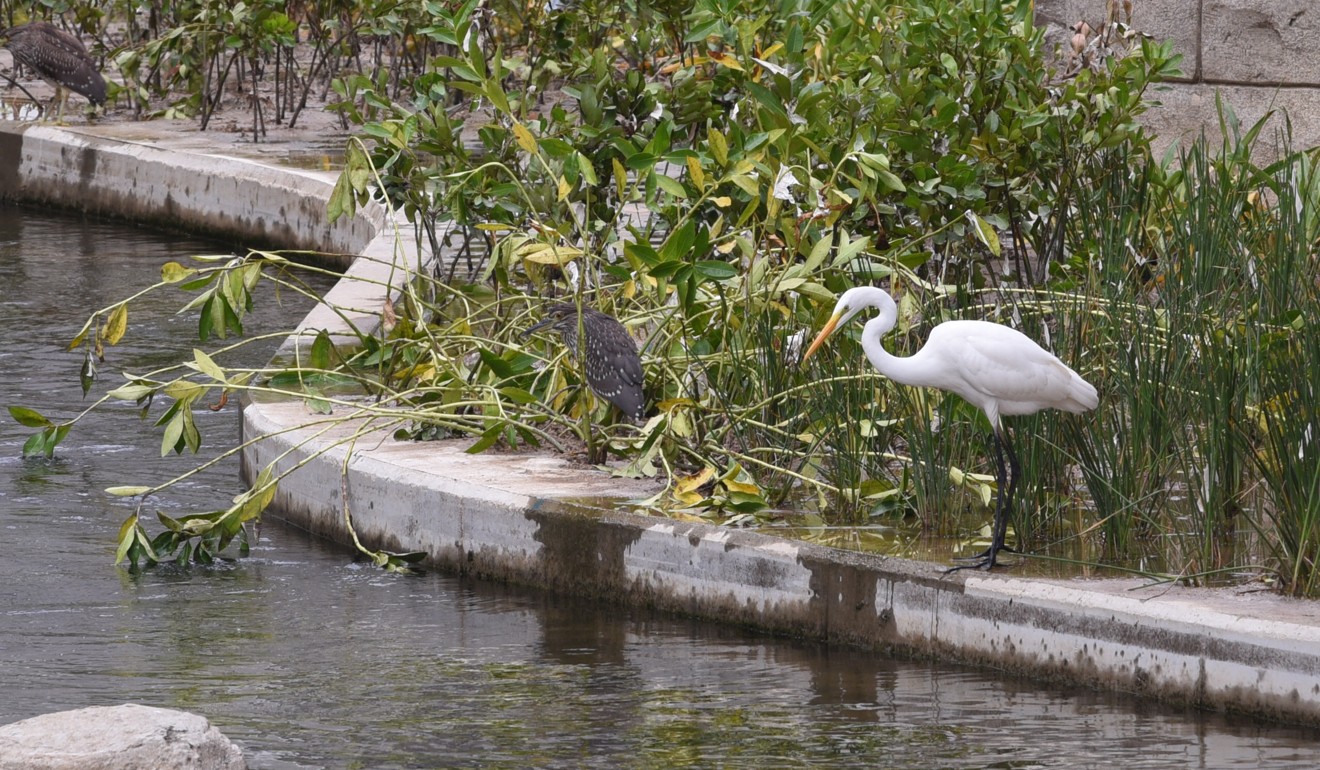
Kai Tak River’s HK$2.8 billion makeover ready before rainy season in Hong Kong
The channel – previously known as the notoriously smelly Kai Tak nullah – will have a deepened riverbed and improved drainage capacity when completed next month

Long-awaited revitalisation works on Hong Kong’s Kai Tak River will be completed next month before the rainy season, giving the once putrid drainage channel a new lease of life as an “urban green river corridor” complete with aquatic and plant life.
The channel – previously known as the Kai Tak nullah serving East Kowloon – will have a deepened riverbed and a floodwater processing capacity one to 1.5 times higher than previous levels, Director of Drainage Services Edwin Tong Ka-hung said on Tuesday.
A 1.1km (0.7-mile) stretch of nullah in the Wong Tai Sin section has been fitted with boulders along its banks, new colourful draping plants such as the great bougainvillea, rock planters – some covering flow detectors – and submerged mangrove plants. Rivers walls have also been strengthened.
Tong said the new environment would attract wildlife such as the little egret.

However, residents will not be able to enjoy a stroll by the river as floodwater can reach a height of one metre in less than eight minutes.
The phases of revitalisation works began in 2011 and in 2013. The nullah was previously plagued by environmental hygiene problems including a bad smell due to rapid urbanisation, structural ageing and inadequate drainage capacity.
The entire project cost about HK$2.8 billion (US$359 million).
Tong said the revitalised river would be able to withstand a “once in 200-year flood”.
“Upon completion of the works, the drainage capacity of the Kai Tak River can reach the current design standard, so as to mitigate the flooding risk in Wong Tai Sin and San Po Kong,” Tong said.

“The living environment will be improved through enhancing the townscape of the area, the provision of a scenic and leisure place for enjoyment of the public, as well as fostering closer connection with adjacent areas.”
The department has been trying to revitalise some of Hong Kong’s 228 rivers and nullahs with “blue-green” designs in recent years. Recent projects include those at the Ho Chung and Lam Tsuen rivers. The Tsui Ping nullah in Kowloon East was also getting a makeover. The department expected the second part of a public consultation for the Tsui Ping River to begin within the year.
Meanwhile, the department announced that the number of flooding black spots had dropped from a high of 90 in 1995 to seven in 2017 and just six this year. One site in Tai Po was removed from the list with the completion of a 1.2km box culvert along Tung Tsz Road.

That left Shek Wu Wai in Yuen Long, the Lam Tsuen Valley Basin and Ting Kok Road – Shuen Wan Chim Uk to Wong Yue Tan section – in Tai Po, Chatham Road South in Yau Tsim Mong, Pok Fu Lam Village in Southern district and Morrison Hill in Wan Chai.
Tong said the department would dispatch staff to clear up drains and remove debris at black spots before the rainy season begins.
According to the Hong Kong Observatory, the annual rainfall this year was forecast to be between 1,900mm and 2,500mm, which was normal to below normal.
Five to eight tropical cyclones entering within 500 kilometres of the city had been forecast for 2018, also considered normal to above normal.